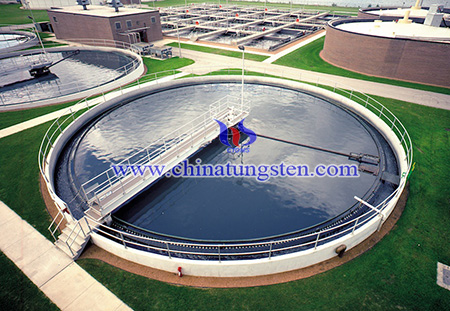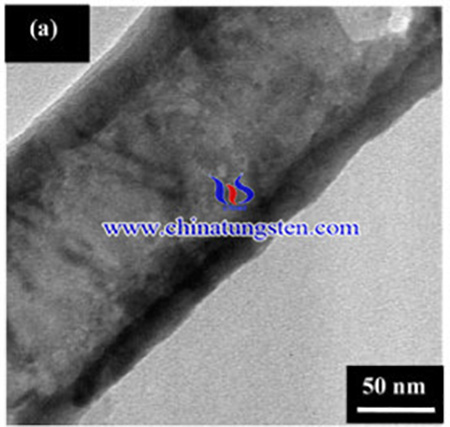Production of Tungsten Trioxide Nanoplates with Improving Photocatalytic Activity Utilizing Ammonium Paratungstate
- Details
- Category: Tungsten Information
- Published on Friday, 09 July 2021 05:00
- Written by yuntao
- Hits: 1493

A fabrication process of tungsten oxide (WO3) nanoplates with ammonium paratungstate has been performed, the product showed great photocatalytic activity due to the plate-like shape. Tungsten oxide (WO3) is a promising candidate for semiconductor gas sensors, electrochromic devices and photocatalysts. Structure and morphology of WO3 have obvious influences on its properties and applications. It has been reported that tungsten oxide with mixed structures exhibits poor optical properties, whereas the single-structure tungsten oxide, either hexagonal or cubic, exhibits noticeable absorption capacity.
Enhanced Activity of Urea Electrooxidation on Tungsten Carbide Composites Using APT
- Details
- Category: Tungsten Information
- Published on Friday, 09 July 2021 04:49
- Written by yuntao
- Hits: 1572

As a hydrogen carrier for long-term sustainable energy supply, urea (CO(NH2)2) has been attracting increasing attention due to its stable, relatively non-toxic, non-flammable and renewable properties. Recently, the electrooxidation of urea has been used as an effective approach for hydrogen production as well as treatment of urea-rich wastewater.However, the current major challenge is to improve the catalytic activity and CO-tolerance of the catalyst.
Read more: Enhanced Activity of Urea Electrooxidation on Tungsten Carbide Composites Using APT
Enhancement of Titanium Dioxide via APT for PEC Water Splitting
- Details
- Category: Tungsten Information
- Published on Friday, 09 July 2021 04:32
- Written by yuntao
- Hits: 1648

Photoelectrochemical (PEC) water-splitting technology is one of the most considerable technologies to synthesis H2 gas as a clean energy. Titanium dioxide (TiO2) has caught a lot attention as an effectual photoelectrode in PEC water-splitting for H2 production owing to its unique and promising functional properties, such as high photocatalytic activity, long term photo-stability, superior oxidation ability, inertness to chemical environment, as well as low cost.
Read more: Enhancement of Titanium Dioxide via APT for PEC Water Splitting
Ammonium Paratungstate Used in Photocatalytic WO3-TiO2 Material
- Details
- Category: Tungsten Information
- Published on Friday, 09 July 2021 04:40
- Written by yuntao
- Hits: 1523

Employing semiconductor powders as photocatalysis for the degradation of organic pollutants in water has received a lot attention in the last decade. Titanium dioxide (TiO2) inhibits amazing photocatalyst properties including high activity, chemical stability, and low cost. Nevertheless, the photocatalytic activity of TiO2 (with band gap of 3.2 eV and excited by photons with wavelengths under 387 nm) is still limited to irradiation by UV wavelengths, so that photocatalytic process does not occur effectively during the irradiation with solar light as only about 4% of the total radiation of the solar spectrum is in ultraviolet region. Thus, modification of TiO2 in the view to obtain a higher light absorption by shifting absorbance to the visible wavelengths has become the aim of many authors. One of the methods is the coupling of TiO2 with other semiconductors such as TiO2/CdS, TiO2/SnO2, TiO2/ZnO, and TiO2/WO3.
Read more: Ammonium Paratungstate Used in Photocatalytic WO3-TiO2 Material
Production of WO3/HPG composites with Ammonium Paratungstate for Photocatalytic Application
- Details
- Category: Tungsten Information
- Published on Friday, 09 July 2021 04:26
- Written by yuntao
- Hits: 1437

Tungsten oxide (WO3) is believed to be a remarkable and feasible photoactive material due to its stable physio-chemical characteristics under different reaction conditions. Furthermore, WO3 has a band gap energy around 2.6 eV. Nether less, bulk WO3 semiconductor, surface accumulation of photo generated charge carriers led to increase their recombination rate and eventually limiting the photocatalytic efficiency.





 sales@chinatungsten.com
sales@chinatungsten.com